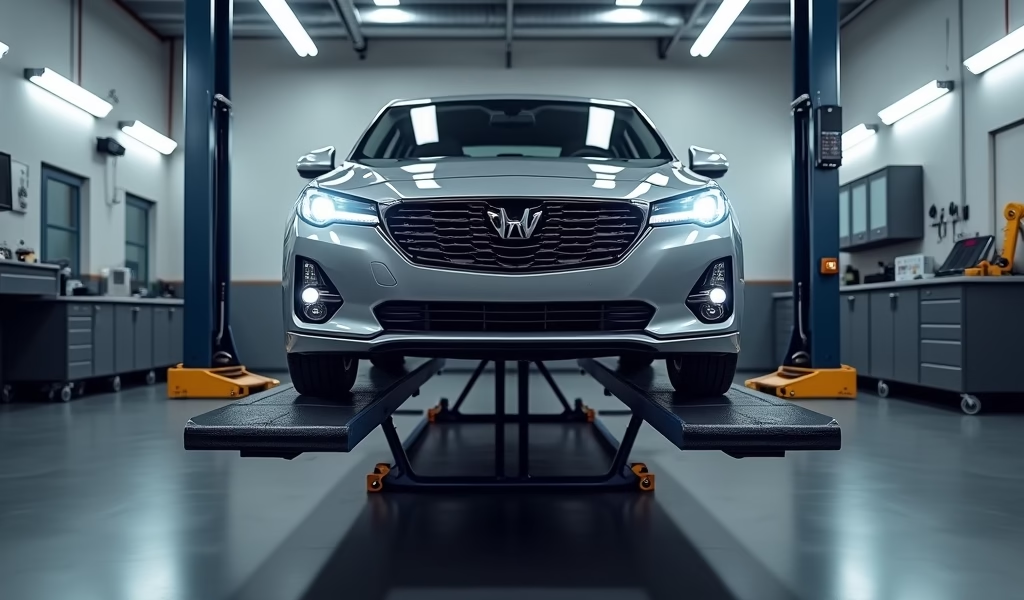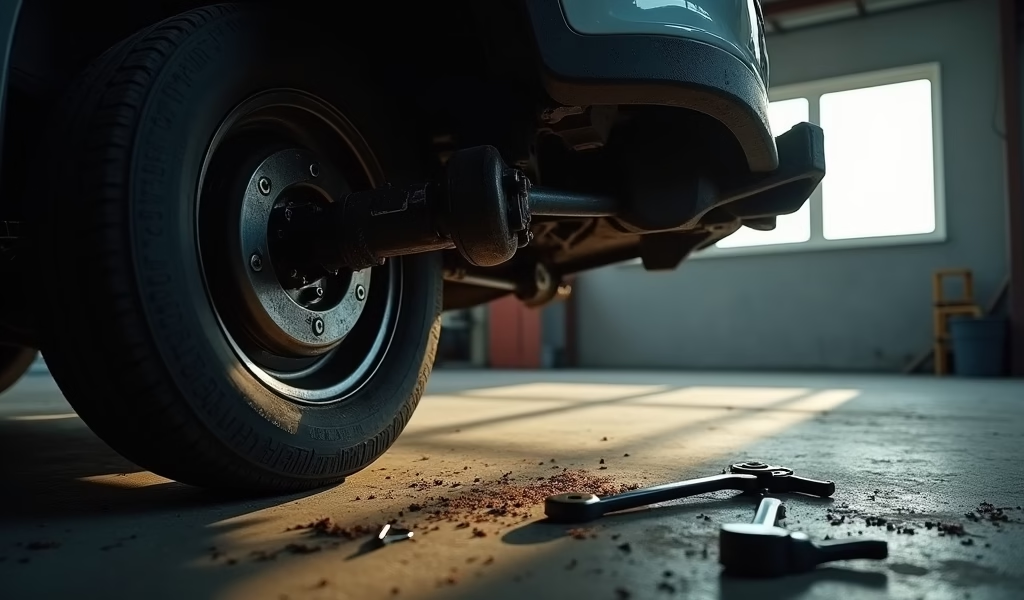Overview
This article explains caster trail measurement as the distance between the steering axis and tire contact point, detailing five essential tips for accurate measurement: using proper tools, ensuring correct vehicle setup, understanding calculation methods, accounting for temperature variations, and knowing when to seek professional help. The proper measurement and adjustment of caster trail is critical for vehicle handling, stability, and steering responsiveness, with incorrect settings potentially causing problems ranging from twitchy steering to excessive steering effort.
Table of Contents
- Understanding Caster Trail: What Is It?
- The Importance of Caster Trail Measurement
- Tip 1: Using the Right Tools for Accurate Measurement
- Tip 2: Ensuring Proper Vehicle Setup Before Measurement
- Tip 3: Understanding Different Calculation Methods
- Tip 4: Considering Temperature and Surface Conditions
- Tip 5: When to Seek Professional Assistance
- Common Mistakes in Caster Trail Measurement
- Conclusion
- Frequently Asked Questions
Understanding Caster Trail: What Is It?
Caster trail measurement is a critical aspect of vehicle alignment that many enthusiasts and even some mechanics tend to overlook. As a mechanic who’s been working with suspension systems for over 15 years, I can tell you that understanding caster trail can make the difference between a car that handles like a dream and one that feels like it’s fighting you at every turn.
At its core, caster trail refers to the distance between the steering axis and the point where the tire contacts the ground. Think of it as the “lever arm” that allows your steering wheel to self-center after completing a turn. Unlike caster angle, which measures the forward or backward tilt of the steering axis when viewed from the side, trail is about the horizontal offset created by this angle.
When properly set, caster trail creates that satisfying feeling of stability at highway speeds and the natural return-to-center steering sensation after navigating a corner. It’s particularly important in double wishbone suspension geometry where multiple components interact to create the final handling characteristics.
The Importance of Caster Trail Measurement
Why should you care about caster trail? Well, improper caster trail settings can lead to a host of driving problems that range from annoying to dangerous. Too little trail and your steering might feel twitchy and unstable at speed, requiring constant corrections. Too much, and the steering can become heavy and unresponsive, making parking and low-speed maneuvers a workout.
The beauty of caster trail is that it affects different aspects of your driving experience. It’s responsible for:
- Straight-line stability on highways
- Self-centering action of the steering wheel
- Feedback through the steering wheel
- Predictability during cornering
- Overall confidence in the vehicle’s handling
Modern vehicles come with factory-specified caster trail settings optimized for their particular weight distribution, intended use, and tire specifications. Modifications like changing wheel sizes, altering ride height, or installing aftermarket suspension components can all throw these carefully calculated measurements out of whack.
According to research from the Society of Automotive Engineers, even small variations in caster trail can significantly impact steering feel and stability, especially at higher speeds. That’s why proper measurement and adjustment are essential for both safety and performance.

Tip 1: Using the Right Tools for Accurate Measurement
When it comes to caster trail measurement, using the right tools isn’t just recommended—it’s essential. I’ve seen too many DIY enthusiasts get frustrated with inaccurate readings because they tried to cut corners on equipment.
Your basic toolset should include:
- A quality digital inclinometer or angle gauge
- Turn plates (if measuring via steering angle method)
- A precise measuring tape or laser measuring device
- A level surface for the vehicle
- Wheel chocks for safety
The digital inclinometer is particularly important for accurate caster angle measurement procedure, which you’ll need to calculate trail. Look for one with at least 0.1-degree precision. Some shops use specialized alignment equipment with built-in trail calculations, but these tools will get you there even if you’re working in your home garage.
Pro tip: If you’re serious about suspension work, consider investing in a dedicated caster/camber gauge. While pricier than a basic inclinometer, it’ll save you time and provide more consistent results in the long run. The Hunter Engineering website offers comprehensive guides on alignment tools that can help you choose the right equipment.
Tip 2: Ensuring Proper Vehicle Setup Before Measurement
Nothing torpedoes an accurate caster trail measurement faster than a poorly prepared vehicle. Think of it like baking—you can have the best ingredients and recipe, but if your oven temperature is off, the results will disappoint.
Before you take a single measurement, ensure:
- The vehicle is on a completely level surface (use a bubble level to check)
- Tire pressure is set precisely to manufacturer specifications
- There’s no excessive weight in the vehicle (remove those golf clubs from the trunk!)
- The suspension is settled by bouncing each corner of the car a few times
- All suspension components are in good condition with no worn bushings or ball joints
One often overlooked factor is ride height. If your vehicle isn’t at the factory-specified ride height (or your intentionally modified height), your caster trail measurements won’t be meaningful. Take the time to measure from the center of the wheel to the fender lip at each corner to confirm consistent ride height before proceeding.
Remember that vehicle loading matters too. Most factory specifications are based on a “curb weight plus driver” scenario. If you’re measuring a truck or SUV that regularly carries heavy loads, you might want to consider how that affects your optimal settings for everyday use.
Tip 3: Understanding Different Calculation Methods
When it comes to caster trail measurement, you’ve got options. Different methods work better depending on your equipment and experience level. Let me walk you through the three most common approaches.
The Geometric Method is the most direct. It involves:
- Measuring the caster angle with an inclinometer
- Measuring the spindle length (from steering axis to wheel center)
- Using the formula: Trail = Spindle Length × sin(Caster Angle)
This method is precise but requires clear access to measure the spindle length accurately, which can be challenging on some modern vehicles with complex suspension designs.
The Steering Angle Method is more practical for most home mechanics:
- Turn the steering wheel to 20 degrees left and note the camber reading
- Turn the steering wheel to 20 degrees right and note the camber reading
- Calculate the difference between readings
- Use alignment tables or software to convert to caster and trail values
Many shops use the Alignment Machine Method, where specialized equipment handles the calculations automatically. While convenient, it’s worth understanding the principles behind the measurements rather than treating the machine as a black box.
Each method has its pros and cons, but consistency is key. Pick one approach and stick with it for comparable results over time. If you’re adjusting your toe alignment specification range at the same time, be sure to finalize that adjustment after setting your caster trail, as one can influence the other.

Tip 4: Considering Temperature and Surface Conditions
Here’s something many enthusiasts overlook: temperature matters when measuring caster trail. I’ve seen plenty of head-scratching moments in the shop when measurements taken in the morning don’t match those taken in the afternoon.
Metal expands and contracts with temperature changes, and suspension components are no exception. A difference of 30°F (about 17°C) can actually affect your measurements enough to notice, especially with aluminum components that have a higher thermal expansion rate than steel.
Surface conditions are equally important. If you’re measuring on uneven or sloped surfaces, your readings will be off before you even start. Even subtle slopes that are barely noticeable to the eye can throw off precision measurements.
Here are some practical tips to minimize these variables:
- Try to measure in a temperature-controlled environment when possible
- If measuring outdoors, avoid direct sunlight on suspension components
- Allow the vehicle to “temperature soak” if it’s been driven recently or moved from a different environment
- Use a digital level to check your work surface in multiple directions
- Consider using a dedicated alignment rack or leveled concrete pad for consistency
If you’re tracking changes over time, note the ambient temperature along with your measurements. According to NASA research on material properties, even specialized equipment requires temperature compensation for high-precision measurements—your garage-based alignment work is no different.
Tip 5: When to Seek Professional Assistance
There’s a fine line between DIY pride and practical wisdom. As someone who’s helped countless shade-tree mechanics fix their own alignment mishaps, I can tell you that knowing when to call in reinforcements is a skill in itself.
Consider seeking professional help if:
- Your vehicle has active suspension or advanced driver assistance systems
- You’ve made multiple attempts with inconsistent results
- You lack the specialized equipment for proper measurement
- The vehicle is used for performance driving where precision is critical
- You’re experiencing unusual handling issues that don’t match your measurement findings
Modern vehicles often have interconnected systems where alignment parameters affect safety features. For example, cars with lane-keeping assist or adaptive cruise control may require recalibration after alignment changes. These procedures typically require dealer-level scan tools that most home mechanics don’t have access to.
That said, working alongside a professional can be educational. Many independent shops will let you observe or even participate in the process if you express genuine interest in learning. I’ve had customers who’ve become quite knowledgeable this way, building a relationship that benefits everyone.
Common Mistakes in Caster Trail Measurement
Even experienced mechanics occasionally stumble when measuring caster trail. Let me share some common pitfalls I’ve encountered over the years—both in my own work and when helping others troubleshoot their measurements.
First, ignoring the vehicle’s history is a major oversight. Collision damage, even minor incidents that didn’t require body repairs, can permanently alter suspension mounting points. If your vehicle has been in an accident, standard specifications might not apply anymore.
Another frequent mistake is failing to account for modified components. Aftermarket control arms, spindles, or even non-standard tire sizes can all change the effective caster trail. Don’t blindly chase factory specs if your vehicle is no longer in factory configuration.
Misinterpreting results is also common. Remember that caster trail is about the balance between stability and steering effort. Some drivers mistakenly maximize one aspect (like high-speed stability) only to create problems in another area (like parking lot maneuverability).
Finally, rushing the process almost always leads to errors. Proper caster trail measurement requires methodical work and attention to detail. Set aside ample time, work through each step carefully, and verify your measurements before making adjustments.
Conclusion
Mastering caster trail measurement isn’t just about following procedures—it’s about understanding how this critical alignment parameter affects your vehicle’s handling, stability, and overall driving experience. The five tips we’ve covered provide a solid foundation for approaching this aspect of vehicle maintenance with confidence.
Remember that caster trail is just one piece of your vehicle’s alignment puzzle, working in concert with caster angle, camber, toe, and other geometry factors to create the handling characteristics you experience behind the wheel. Taking the time to measure and adjust it correctly pays dividends in vehicle performance, tire longevity, and driving comfort.
Whether you’re restoring a classic car, setting up a track day weapon, or simply maintaining your daily driver, proper caster trail ensures predictable handling and that satisfying, confidence-inspiring feel through the steering wheel. And isn’t that what makes driving enjoyable in the first place?
So grab your tools, set aside some quality time in the garage, and approach caster trail measurement with the attention it deserves. Your car—and everyone who rides in it—will thank you.
Frequently Asked Questions
What is the difference between caster angle and caster trail?
Caster angle is the forward or backward tilt of the steering axis when viewed from the side, measured in degrees. Caster trail is the horizontal distance between the steering axis and the tire’s contact patch, measured in millimeters or inches.
How often should I check my vehicle’s caster trail?
Check caster trail whenever you get a full alignment, typically every 15,000-30,000 miles or after suspension modifications. Additional checks are recommended after hitting large potholes or curbs that might affect alignment.
Can I adjust caster trail without special equipment?
Basic measurements can be taken with an inclinometer and measuring tape, but precise adjustments typically require alignment equipment. Some vehicles have adjustment points accessible to DIYers, while others require specialized tools or modified parts.
How does caster trail affect tire wear?
Improper caster trail can cause uneven tire wear, particularly on the inner or outer edges. It affects how the tire contacts the road through turns, potentially creating scrubbing forces that accelerate wear patterns.
Is more caster trail always better for stability?
No, excessive caster trail can make steering too heavy and reduce responsiveness. The ideal amount balances straight-line stability with appropriate steering effort and feedback.

